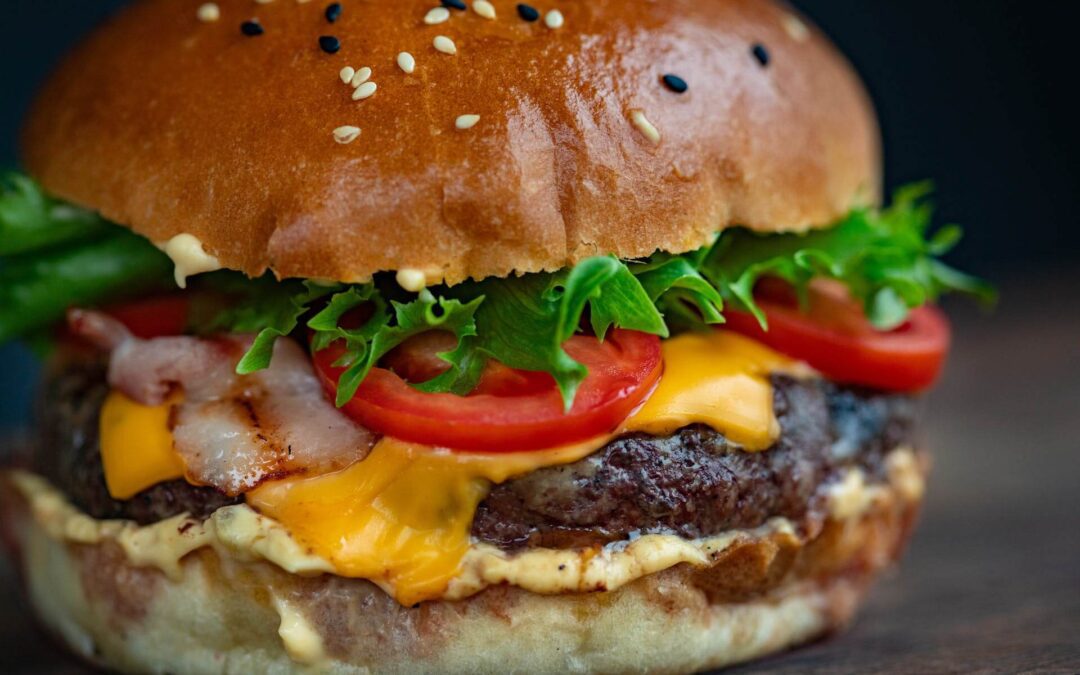Losing weight feels fantastic, not to mention the benefits to your blood sugar, blood pressure, and cholesterol [1].
However, some persons who lose considerable weight experience loose skin around their neck, abdomen, arms, legs, or buttocks (or all of the above).
Loose or sagging skin can psychologically impact your self-esteem, comfort, and movement. Physically, it can cause rashes and illness due to sweat trapped in your skin folds.
In this article, we’ll go over everything you need to know about loose skin and the ketogenic diet, whether you’re worried about it in the future or already have it. Learn what causes sagging skin, if keto can help, and how to treat it.
But first, understand the distinction between loose skin and obstinate fat.

Is It Loose Skin or Stubborn Body Fat?
Just because your skin is soft and jiggly doesn’t mean you have loose skin. So, before you believe you have loose skin due to losing weight, here’s what you should do.
The “pinch test” is the most straightforward approach to detecting loose skin. To do so, squeeze the skin on your “problem areas,” such as your lower belly.
The pinch test should reveal very little flesh between your fingers if you don’t have loose skin. It’s the same amount of skin as when you pinch the back of your hand.
And conduct the pinch test and grasp some subcutaneous fat. Your fingers should be a few millimeters apart, if not more, indicating that you’re hanging onto extra fat rather than loose skin following weight reduction.
On the other hand, loose skin that persists following fat loss is more likely to be inelastic and sagging. During the pinch test, it is thin and has a slight rebound (unlike tissue that contains persistent fat).
A visual inspection helps you decide. If your problem regions are flabby but not wrinkled, you’ll likely deal with persistent fat (“subcutaneous fat” that hides beneath your skin). On the other hand, a wrinkled look is more likely to be caused by loose skin.
Another option to determine whether you’re dealing with extra fat or not is to get your body fat percentage professionally analyzed, which may inform you whether you still have fat to lose. Essential fat is 2-5% in men and >25% in women, whereas essential fat is 10-13% in men and >32% in women. (See the American Council on Exercise’s Percent Body Fat Norms chart for further information.)
DEXA (dual x-ray absorptiometry) and water weighing (also known as hydrodensitometry) are the most precise and accurate methods for measuring body fat [1]. Skinfold caliper measures, which some personal trainers provide, and bioelectrical impedance, which may be obtained on specific household scales, are less dependable and exact.
Does the Keto Diet Cause Loose Skin?
The ketogenic diet does not create loose skin on its own. However, large quantities of weight loss can often result in loose skin, regardless of the diet employed to lose weight (including keto).
In other circumstances, a person tries to go very low carb in the hopes of losing weight quickly — which can happen if you do too much at once. The first “water weight loss” is caused by glycogen depletion, followed by the fat loss while ketosis is maintained.
However, one disadvantage of losing weight rapidly is that your skin may need more time to shrink to its previous shape. As a result, extra skin may cling to previously inhabited regions of body fat.
According to the Centers for Disease Control and Prevention (CDC) and National Institutes of Health (NIH), “people who lose weight gradually and steadily (about 1 to 2 pounds per week) are more successful at keeping weight off.” [2][3].
Setting realistic and practical objectives can also help avoid loose skin on the keto diet. While you may lose weight faster initially, allowing your body to settle into a consistent weight loss pattern is ideal.
Also, remember that not everyone gets droopy skin after losing weight. Don’t allow concerns about loose skin to prevent you from obtaining a healthy weight!
Your age, living choices, and nutrition quality are all variables that influence your chances of developing loose skin. Read on for additional information on these issues.
Factors That Influence Loose Skin After (or During) Weight Loss
- Age. Collagen is necessary for skin firmness and suppleness. However, as you age, your body makes less collagen – roughly 1% less collagen every year beyond 20 [4].
- Rate of weight loss. A healthy pace of weight reduction is 1-2 pounds per week [5]. Going above this for lengthy periods might result in fast weight loss, which puts you in danger of drooping skin. Furthermore, the more weight you have to shed, the more loose skin you might expect.
- Lifestyle habits. Smoking, excessive sun exposure without protection, chronic stress, and a lack of sleep all lead to poor skin health and drooping skin [6][7][8].
- Sugar consumption. Too much sugar hastens skin aging by cross-linking collagen strands. Cross-linking stops your skin from renewing correctly [9]. Unfortunately, sugar is hidden in many meals, and many individuals use it regularly without recognizing it.
Can the Keto Diet Help with Loose Skin?
Yes, the answer is yes. Following a low-carb, high-fat ketogenic diet can help with loose skin if done correctly. However, you must ensure you obtain all the nutrients from keto-friendly meals to support good skin.
Vitamin C, collagen protein, and omega-3 fatty acids are among the crucial “skincare” nutrients [10][11][12][13]. In a moment, we’ll go over each vitamin in depth so you can understand its significance in avoiding excess skin.
It’s important to remember that your skin is susceptible to what you consume and everything else it comes into contact with. So, in addition to a well-planned keto diet, measures such as collagen supplementation, intermittent fasting, regular physical exercise, and a focus on general wellbeing will increase the flexibility of your skin.
How to Tighten and Avoid Loose Skin Naturally
Do the following before considering surgical or non-surgical skin tightening procedures:
1. Give Your Body Time to Adjust
When you lose weight, your skin will shrink, but it will take some time to catch up.
We’ve all heard the expression, “Patience is a virtue.” It’s essential for a healthy and long-term weight loss journey. It reduces the likelihood of excess skin, allowing you to feel good about your appearance when you achieve your ideal body weight.
Aside from loose skin, attempting to lose substantial weight in such a short period has additional negative implications. For example, excessively reducing calories to lose weight rapidly might cause your body to adapt by conserving energy – a mechanism known as adaptive thermogenesis. Furthermore, calorie-restricted diets increase the likelihood of losing lean muscle mass, which may lead to skin loosening [14][15][16].
Forcing quick weight reduction may also result in a lack of essential nutrients such as vitamins and minerals. Sodium, potassium, magnesium, and vitamins A, C, and B vitamins are all common micronutrient deficits.
2. Follow a Keto Diet Meal Plan That Focuses on Whole Foods
Focusing on real foods for your nutritional needs is essential to following a well-formulated keto diet [17]. Choosing natural or minimally processed meals (rather than junk foods and hyper processed foods) helps to increase your consumption of nutrients that enhance skin suppleness, such as:
Protein
Because protein is a critical component of your skin, dietary protein is required for skin restoration. Collagen and elastin are two proteins that are important for the structure of your skin. Collagen strengthens your skin, while elastin keeps it flexible [18].
Aside from that, protein promotes lean muscle mass. Maintaining or developing muscle mass can assist in reducing the look of sagging skin. Does resistance exercise, as a bonus, replenish lost fat with healthy, lean muscle? There will be more on that later in this guide.
So, ensure you get enough protein to promote collagen and elastin formation and muscle mass maintenance. Aim for 1 gram of protein per kilogram of body weight (or your ideal body weight) on a keto diet.
High-protein foods that aid in weight reduction include eggs, steak, salmon, chicken, cottage cheese, and Greek yogurt.
Vitamin C
Vitamin C is high in our skin, indicating its relevance in skin health. Vitamin C both stabilizes and accelerates collagen synthesis [19].
According to various studies, vitamin C levels in aging skin or skin exposed to pollution or UV irradiation are low or depleted [20]. This is critical information for older folks and those regularly exposed to the sun and concerned about losing skin after losing weight.
The good news is that you may boost your vitamin C intake by eating the following foods:
- Fish roe
- Beef liver
- Clams
- Bell peppers
- Cruciferous vegetables (broccoli, brussels sprouts, cabbage, cauliflower)
- Strawberries
- Tomato
- Spinach
A 90-day oral supplementation with a fermented papaya preparation or an antioxidant cocktail (including 50 mg of vitamin C) increased skin elasticity and hydration in healthy, nonsmoker male and female volunteers, according to one double-blind nutrition intervention study [21].
If your diet lacks enough vitamin C, you can supplement with a vitamin C supplement. Just make sure it’s keto-friendly and doesn’t include any additional sugars.
Omega-3 Fatty Acids
Consuming omega-3 fatty acids in fish oil, krill oil supplements, or oily seafood such as salmon, mackerel, and sardines may help your body produce collagen.
Researchers discovered a 10% increase in skin elasticity among female participants who took a supplement high in natural fish oil for three months in a 2008 randomized controlled trial [22].
Omega-3 fatty acids also protect the skin from UV exposure, which has been linked to skin wrinkling and elasticity loss [23].
3. Supplement with Collagen Peptides
Collagen protein powder supplements help tighten up loose skin in addition to consuming meals that promote collagen formation.
A randomized, placebo-controlled trial published in 2019 found that patients who took 2.5 grams of collagen peptides orally for 12 weeks had better skin hydration, elasticity, and density [24].
A study published in the Journal of Cosmetic Dermatology found that oral collagen peptides regularly improve skin hydration and collagen density. This treatment significantly decreased collagen fragmentation, a common hallmark of aging skin [25].
When shopping for a collagen supplement, search for one with the fewest chemicals and carbohydrates. In this manner, you’ll get the advantages of collagen while staying in ketosis.
Perfect Keto provides grass-fed keto collagen with MCTs in powder form to promote the health of your connective tissues, especially your skin. It has no artificial ingredients, is sweetened with stevia, and is available in six delectable varieties.
4. Intermittent Fasting
Autophagy is the process by which cells digest themselves to eliminate components that are no longer required. Autophagy is beneficial to skin health and essential for skin cells to function correctly as they age [26][27].
According to research, our autophagic activity declines as we age, and our dermal fibroblasts become less capable of making collagen [28].
Intermittent fasting may aid in this situation since it has been shown to stimulate autophagy, which should maintain healthy fibroblasts [29]. Beginners can practice intermittent fasting by missing one meal daily (breakfast) or following the 16/8 fast.
A word of advice: While intermittent fasting has advantages, be careful not to overdo it to the point of forsaking sufficient nutrition, as we previously highlighted in this post. Also, if you have an eating problem (or have previously battled with eating disorders), avoid fasting or get professional advice from a doctor or counselor.
5. Engage in Physical Activity
Building strong and lean muscle via strength training is another excellent way to prevent or treat loose skin. Replacing lost body fat with power not only makes you stronger and more toned, but it also has the following incredible benefits:
- Muscle is more metabolically active than fat and burns more calories at rest [30].
- Reduced insulin resistance is connected with lean muscle mass [31].
- Resistance exercise increases bone strength, lowering fracture risk [32].
Don’t be concerned about bulking up with weight lifting. A sculpted body do you not have to go that far.
For even more significant outcomes, include cardiac activity in your program. Brisk walking, jogging, and cycling can help you lose weight and improve cardiovascular health. Combining aerobic and strength training gives you the best of both worlds.
6. Other Skincare and Wellness Strategies
Along with the suggestions above, remember about healthy habits like getting enough sleep, decreasing stress, protecting yourself from the sun, and quitting smoking.
These items may appear trivial, but when combined with an excellent keto diet, fasting, and physical exercise, they significantly influence your skin health. They can have a noticeable effect on skin elasticity or looseness.
Should You Undergo Surgery for Loose Skin?
If you’ve reached your desired weight but still have a lot of excess skin, you could be a suitable candidate for skin removal surgery. In rare circumstances, removing loose skin may be necessary if it is causing rashes or infections. However, you should first contact your doctor to determine your qualifications.
One invasive method is body-contouring, where a plastic surgeon eliminates drooping skin and leftover body fat [33]. The form of the region is then improved. Tummy tucks, arm lifts, and thigh lifts are examples of body-contouring operations. Remember that surgery has risks and adverse effects. Furthermore, they need extra recuperation time.
Radiofrequency, infrared light, and liposuction are less intrusive procedures with a decreased risk of problems. Your doctor should advise you on which one is best for you.
The Bottom Line
A ketogenic diet that meets your nutritional requirements allows you to lose weight while preventing or decreasing saggy skin. Ensure you include skin-boosting elements like protein, vitamin C, and omega-3 fats.
While you’re about it, try to lose body mass slowly and consistently (rather than rapidly) to give your skin enough time to snap back, especially if it has been stretched over time. But don’t worry if you’ve already dropped a lot of weight. Consider using natural solutions, such as a high-quality keto-friendly collagen supplement.
However, if you’ve done everything correctly, including waiting many months to a year for it to tighten up, but you still have a lot of loose skin, surgery or a non-invasive medical treatment may be worth a shot. In that situation, you should consult with your doctor.



![How Low Carb and Ketogenic Diets Boost Brain Health [Benefits & Effects]](https://eathealthyisgood.com/wp-content/uploads/2023/11/pexels-ella-olsson-1640773-1-1080x675.jpg)



0 Comments